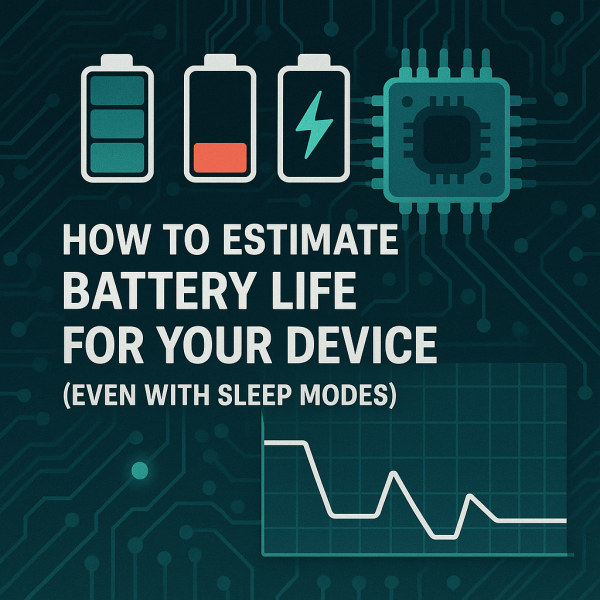Whether you’re designing a sensor node, a wearable device, or a portable gadget, battery life estimation is a key part of the process. Here’s a simple way to calculate how long your battery will last — even if your device switches between active and sleep modes.
Basic Formula (For Constant Current)
If your device draws a constant current, battery life is easy to estimate:
Battery Life (hours) = Battery Capacity (mAh) / Device Current Consumption (mA)
Example:
– Battery: 2200 mAh
– Device current: 40 mA
Battery Life = 2200 / 40 = 55 hours
When Your Device Has Sleep and Active Modes
In most real-world applications, devices don’t run at full power 24/7. They might wake up briefly, do some work, then return to low-power sleep mode.
To account for this, you’ll need to calculate the average current draw across the full duty cycle (i.e., one full period of activity and sleep).
Step-by-Step Example
Let’s say your device:
– Draws 40 mA when active, and stays active for 2 seconds
– Draws 0.1 mA when sleeping, and sleeps for 8 seconds
– Total cycle = 10 seconds
Step 1: Compute Average Current
Average Current = ((40 * 2) + (0.1 * 8)) / 10 = (80 + 0.8) / 10 = 8.08 mA
Step 2: Estimate Battery Life
Using a 2200 mAh battery:
Battery Life = 2200 / 8.08 ≈ 272.3 hours
Real-World Considerations
While this gives a solid estimate, keep in mind:
– Battery capacity decreases with age and cold temperatures.
– Devices may consume extra current during startup, communication bursts, or sensor sampling.
– Battery cutoff voltage matters — some devices shut down before the battery is truly empty.
Final Tip
Use this method during your design phase to make informed decisions about battery size, duty cycles, and sleep strategies. Optimizing power usage can drastically extend your product’s life between charges.
If you’d like to make this easier, feel free to reach out — our engineers are happy to help.



